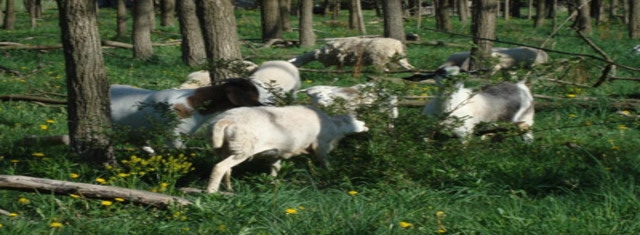Miscellaneous
Grazing Animals Aid in Preventing Forest Fires
Italy and Spain Leading Way

(Source: Cornell)
USPA NEWS -
European shepherds and ranchers are taking the lead in forest fire prevention, by leading their animals to clear away pervasive underbrush that allows fires to grow too big.
Laws once prohibiting such practices are being bent or rescinded, as rural communities begin taking a key role in forest management. Among the proponents for this practice is Grazelife, a publicly-funded science effort seeking to clarify the best way grazers, both domestic and semi-wild, can help increase biodiversity and prevent forest fires.
In flatter or thinner forested areas, large herbivores were found in a 2021 Grazelife study to be significantly effective in reducing forest fire risk. “In general terms, it is clear that wild and semi-wild herbivores such as horses and bison can reduce wildfire risk through their grazing,” says Julia Rouet-Leduc, lead author of the study. “Such herbivores can be particularly effective in remote and inaccessible areas, where careful management can prevent wildfire and benefit wild nature in other ways.”
Smaller animals like goats and sheep are ideal for areas that lack natural predators. There are virtually no large carnivores in all of Italy, and without the risk of losing an expensive herd animal, the eating habits of these smaller livestock make them perfect for clearing woody shrubs and things which larger herbivores can’t stomach. Even though a forest in Europe today might look like a place of pristine and natural beauty, in realty it’s no longer a natural ecosystem. European forests have experienced human alternations through forestry and livestock grazing, and natural equilibrium simply doesn’t exist in most forests any more.
When climate change regulations limited the shepherd’s ability to work in woodlands, it was part of a continent-wide effort to scale back deforestation and it worked well, with total forest cover in Italy increasing by 75% since the 1960s. However, it was likely the first time many forests, such as those on the mountains of Montiferru on the Italian island of Sardinia, had experienced any prolonged period without grazing animals among their trunks. Since natural numbers of roe and red deer, and other native herbivores, have long since disappeared from European forests, the loss of sheep and goats meant that nothing prevented woody shrubs from dominating the understory, turning brush fires into destructive infernos.
This was the scenario that caused shepherds on Sardinia to write a letter to the Italian Ministry of Agriculture, not only asking to allow forest-dwelling shepherds to allow their animals to graze within the woods again, but to create a restoration project of rural areas in Montiferru, where Italy’s worst wildfire in 40 years recently burned its way from the mountain tops to the sea. Their plan is to bring in more shepherds to better control the fires, and encourage eco-tourism in the area, to incentivize the shepherds to stay.
This is already seeing success through both private and public incentives in Catalunya, Spain. In 2016 the Fire Flocks Project started by figuring out where the fires most often started and became the fiercest, before creating a line of premium brand meat and dairy products produced by 22 shepherds, half of them new to the job, who graze sheep, goats, and bovines in 600 fire-prone areas. It makes sense that those most invested in the forests’ survival would be the biggest allies in helping to save them, which goes for both the shepherds and the animals.
Thank you for reading my article. These are merely my thoughts and insights based on the facts. I use only verified sources. No fake news here. I write about a variety of subjects, mainly things I want to research and know more about. You can check out my website – Small Village Life at smallvillagelife.com, where I share useful articles and news.
Wendy writes for the United States Press Agency and is a former columnist with the Fulton County Expositor, Wauseon, Ohio.
Source: Grazelife
Wendy writes for the United States Press Agency and is a former columnist with the Fulton County Expositor, Wauseon, Ohio.
Source: Grazelife
more information: https://smallvillagelife.com
Liability for this article lies with the author, who also holds the copyright. Editorial content from USPA may be quoted on other websites as long as the quote comprises no more than 5% of the entire text, is marked as such and the source is named (via hyperlink).





